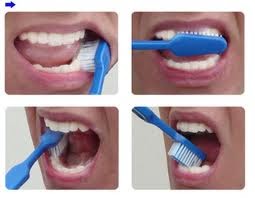Healthy resolutions can keep your teeth healthy, and any of the following strategies will go a long way toward giving you a brighter, healthier smile in the coming year:
Eat Plenty of Fruits and Vegetables
Eating well is important for your dental health. Poor nutrition can affect the entire immune system, increasing susceptibility to many common oral disorders, including gum (periodontal) disease. Antioxidants and other nutrients found in fruits, vegetables, legumes and nuts improve your body’s ability to fight bacteria and inflammation, helping to protect your teeth and gums. In addition, crisp fruits and raw vegetables like apples, carrots and celery help clean plaque from teeth and freshen breath.Quit Smoking or Using Other Tobacco Products
Using tobacco can harm your mouth in a number of ways, increasing your risk for tooth discoloration, cavities, gum recession, gum disease and throat, lung and oral cancer. Smokers are about twice as likely to lose their teeth as non-smokers. It’s not just smoking tobacco that has negative effects on your oral health: use of smokeless tobacco can be just as harmful to your oral health. The good news is that the risk of tooth loss decreases after you quit smoking or using smokeless tobacco.Limit Your Alcohol Intake
You may already know that excessive alcohol intake can have an effect on your overall health, but did you know that it may also affect your oral health? According to the Academy of General Dentistry, those who smoke, eat poorly and consume excessive alcohol also have increased gum recession (periodontal pocketing). Their studies show that smokers who regularly consume alcohol are less likely to brush their teeth on a regular basis and are less concerned about their basic health than nonsmokers.Brush at Least Twice a Day and Floss at Least Once a Day
Brushing and flossing protect your teeth from decay and gum disease, which is caused by your teeth’s most persistent enemy, plaque – a sticky, colorless, invisible film of harmful bacteria that builds up on your teeth every day. Both brushing and flossing are equally important for good oral health: according to the Academy of General Dentistry, only flossing can remove plaque from between teeth and below the gumline, where decay and gum disease often begins.Without proper brushing and flossing, you may develop bleeding gums, which may worsen to severely swollen, red, bleeding gums (gingivitis) and, eventually, gum disease. Because diseases of the mouth can affect the rest of your body, it is especially important to maintain good oral health.
See Your Dentist for Regular Checkups
By seeing your dentist at least twice a year, you can help prevent any dental health problems before they cause discomfort or require more comprehensive or expensive treatment. Regular visits allow your dentist to monitor your oral health and recommend a dental health regimen to address areas of concern.For this new year, resolve to treat your mouth right: improve your diet, quit smoking and improve your oral hygiene habits – your teeth and your body will thank you for it!
1-877-Dr Teeth- (360) 740-6212
Town Center Dental
3 Locations - Chehalis, Wa -- Rochester, Wa -- Rainier,
Or




































